Most of my posts are indirectly or directly about computers. For those that know me well, this is no surprise; I feel at home when my hands are on a keyboard. That said, my life expands out of my office from time to time. Usually onto a forest trail or sidewalk for long runs and walks, but also into the kitchen where a few hours of my time pass on a daily basis.
Recently, I’ve taken up baking bread after my wife brought back a sourdough starter from Sea Wolf Bakery, a nearby local bakery in the Wallingford neighborhood here in Seattle. While the starter went largely unused for years (aside from a regular feeding every 3-4 weeks to keep it alive), life is now such that bread baking is easy to incorporate into my daily schedule.
After several unsatisfactory baking sessions and playing around with different techniques and variables, my bread has finally reached it’s happy place. Each loaf gets a great oven spring, the texture of the bread is chewy, but not dense, and the air pockets are well-distributed. It’s also much more flavorful as I’ve adapted to include a 12-hour proof in the fridge to allow the yeast to work its magic without overproofing the loaf.
The overall process is delightfully simple, although it requires some planning and care. A normal bread-baking day starts out when I wake up to make coffee. While the coffee grounds steep in the French press, I pull my starter out of the fridge and measure out 40g of it into a new container along with 160g of water and 160g of flour. The goal here is to refresh the starter so that the yeast reactivates and gets to work. Around 5 or 6pm (about 10 hours later) the starter should look like so:
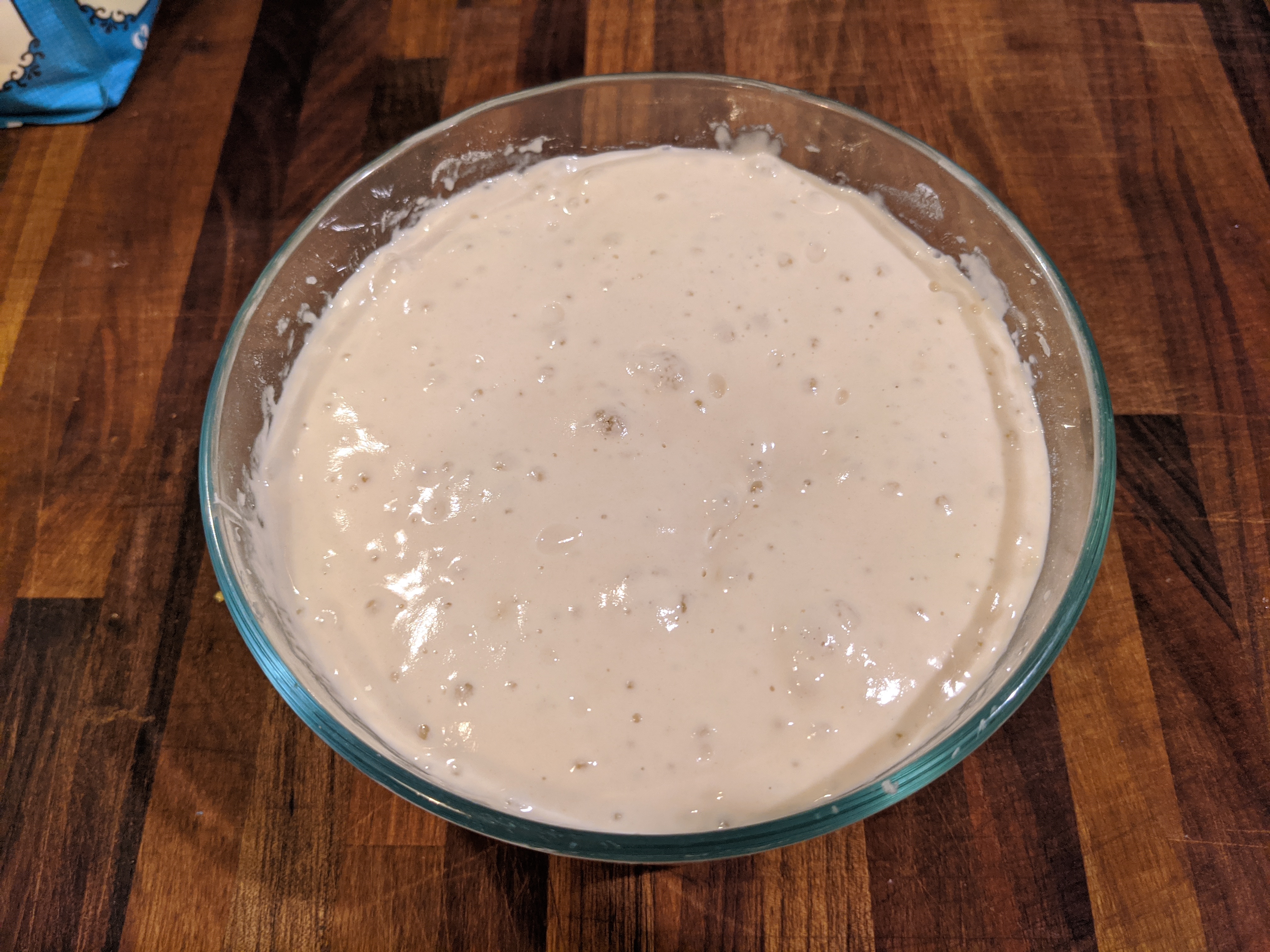
Those bubbles are indicative of the yeast working its magic. The real test, however, is when you drop the yeast into the water to begin the bread making process.
Once things look ready, I measure out 700g of water. As our apartment is a little on the cooler side and the making of bread is all about regulating time and temperature, I make sure the water is at about 85° F and then drop in 200g of the starter. If the starter is ready, each spoonful that I drop into the water should float around on the surface:
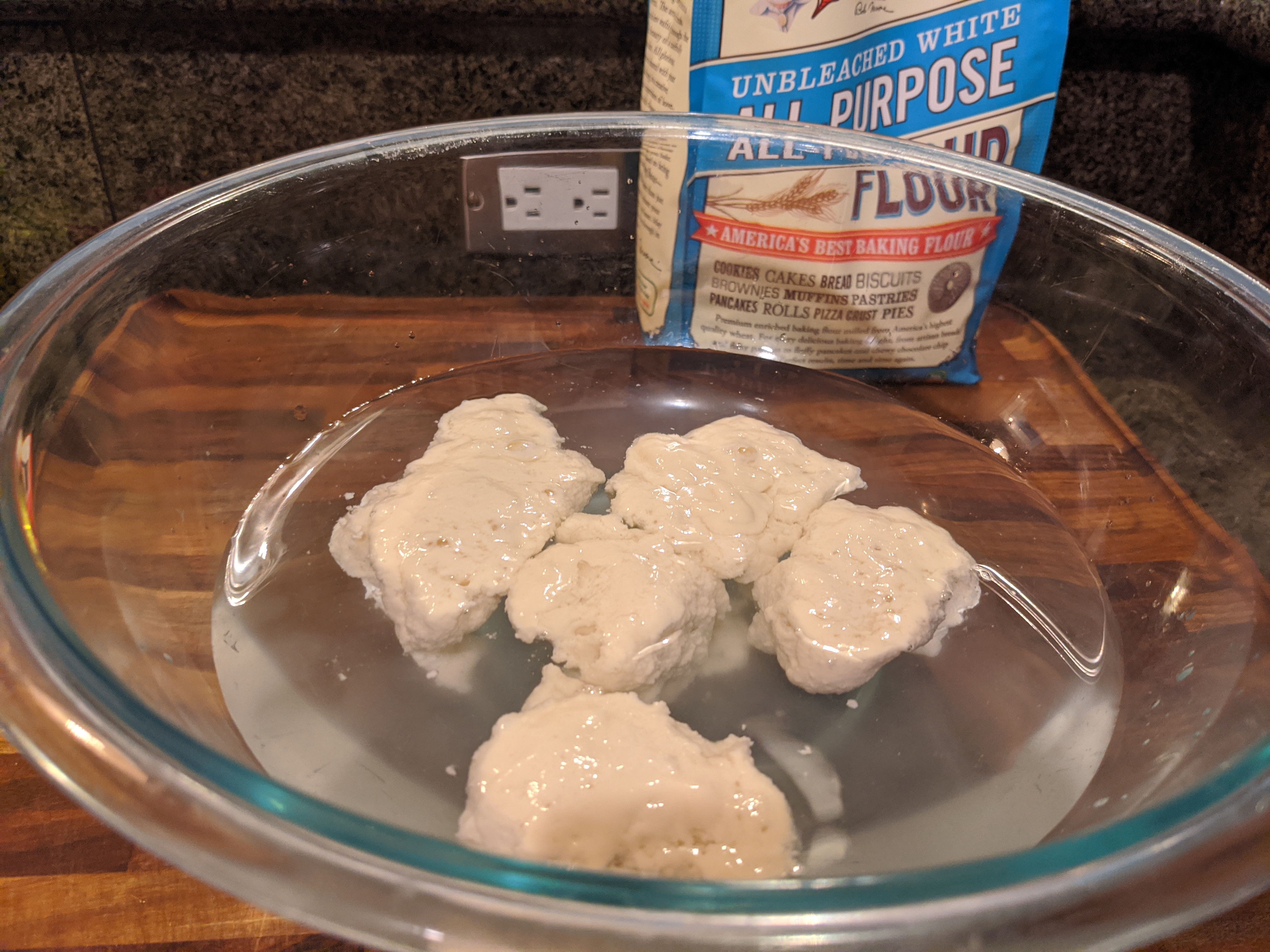
After that, I mix in 1000g of flour and let things sit for 30 minutes. This period of time is known as the autolyse, which helps to hydrate the flour, give time for a gluten structure to form, and enhances the flavor of the bread as the yeast start eating the flour.
Once that is done, 20g of salt and 50g more of water go into the bowl and the folding process begins. This is a 3-4 hour process that includes (for me) placing the Pyrex bowl on a heating pad to keep the dough at 80-82° F to help encourage fermentation. Every 30 minutes, the dough is gently folded with the end goal of transforming a blob of flour and water from this:
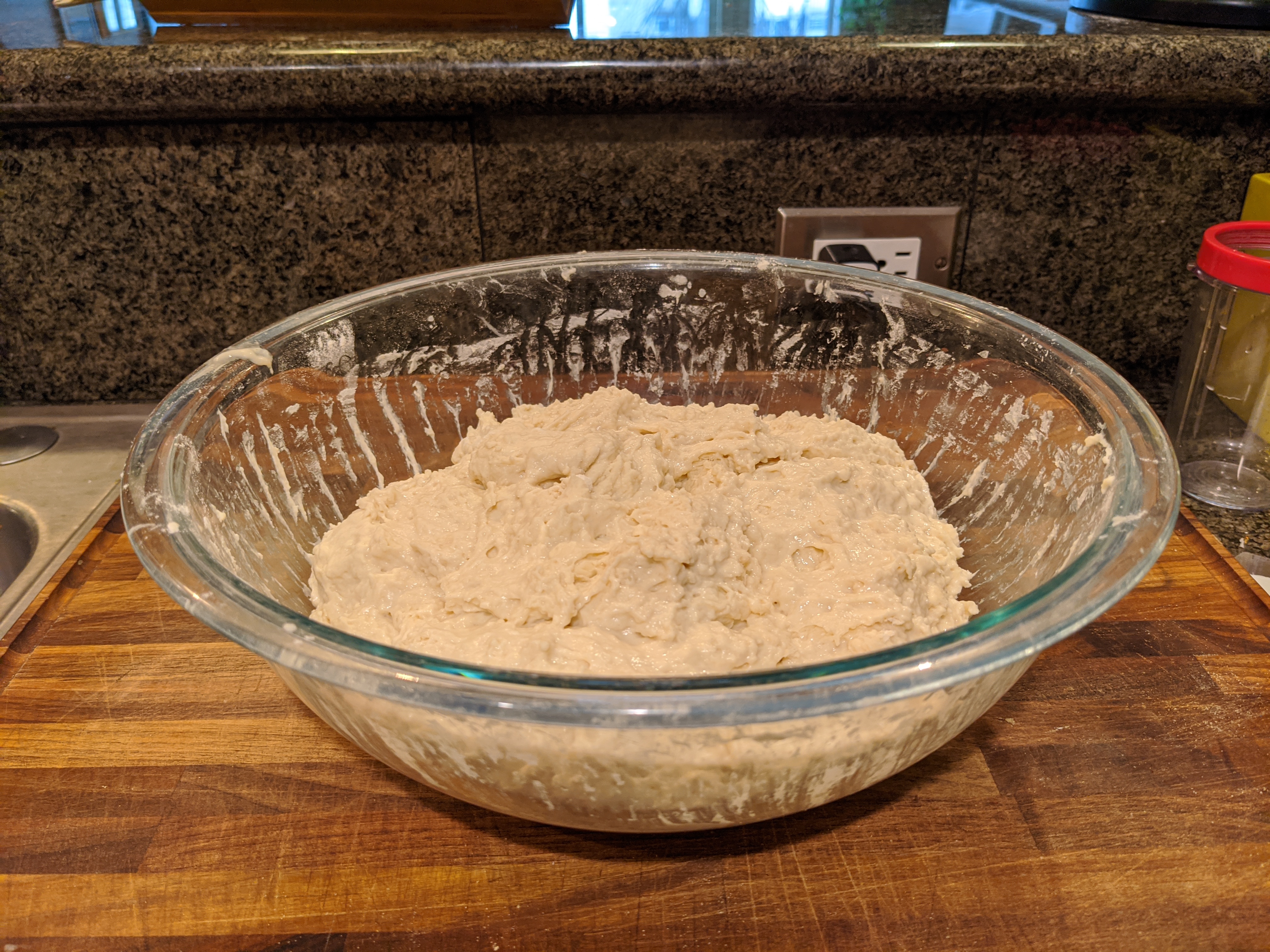
to something fluffy and stretchable:
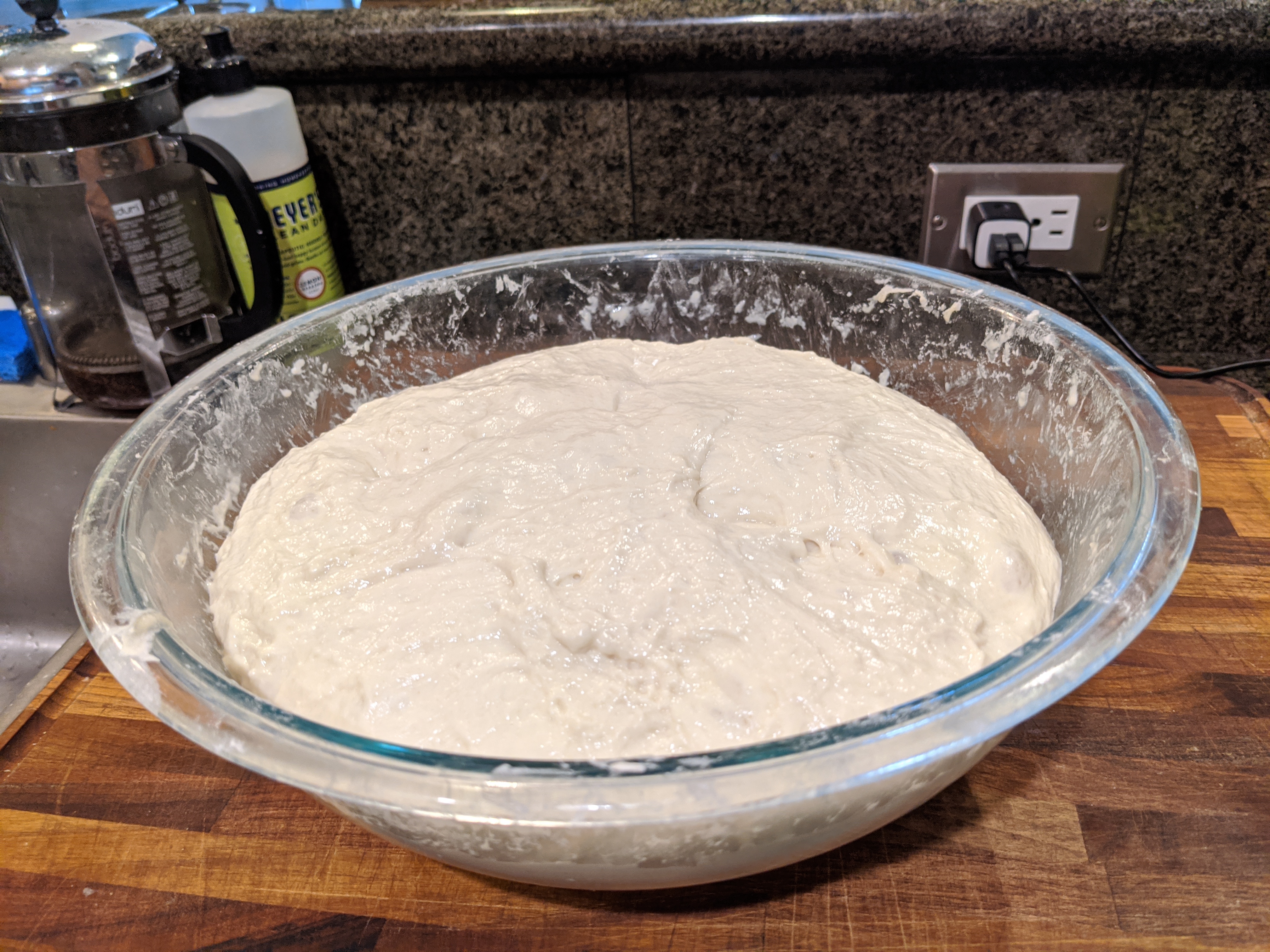
At this point, it’s usually around 10:30pm and my wife is asking why I’m banging around in the kitchen, so it’s time to wrap things up for the night. The final step for the evening is to cut the dough up into similarly sized masses and then preshape and shape. The preshaping was the hardest step for me as the dough is quite wet, but after buying a bench knife and watching the video below, my technique vastly improved.
This stage of preshaping/shaping is incredibly important as it encourages the gluten to become stronger and hold the shape of the bread. This is not only important so that you don’t end up with a bread pancake, but also so that the crumb of the bread is chewy and airy, not dense and flat. After the preshape, the dough rests for another 30 minutes on the bench and will flatten out a bit:
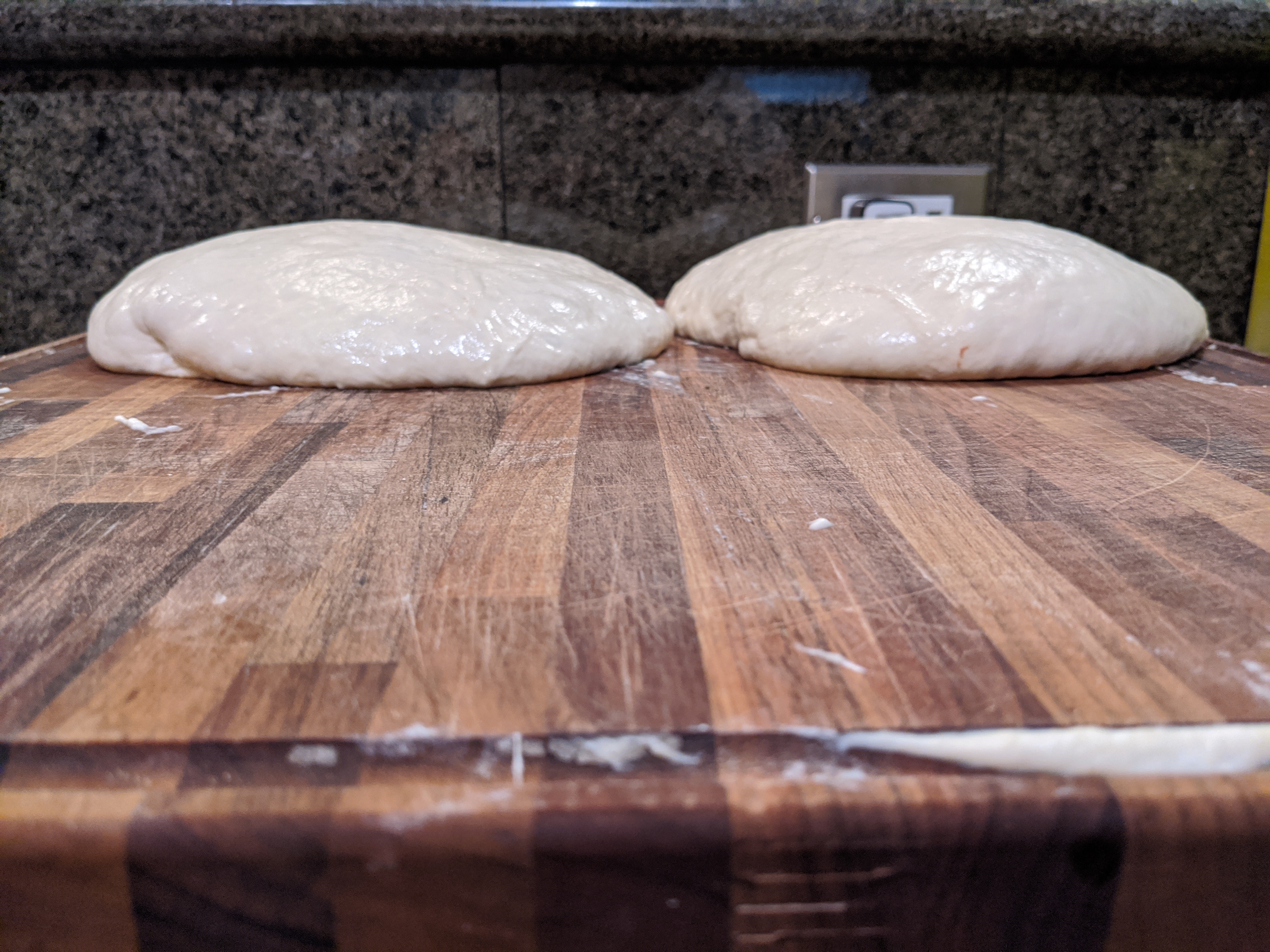
From here, it’s onto the final shaping and then into the proofing basket where the bread will stay overnight:
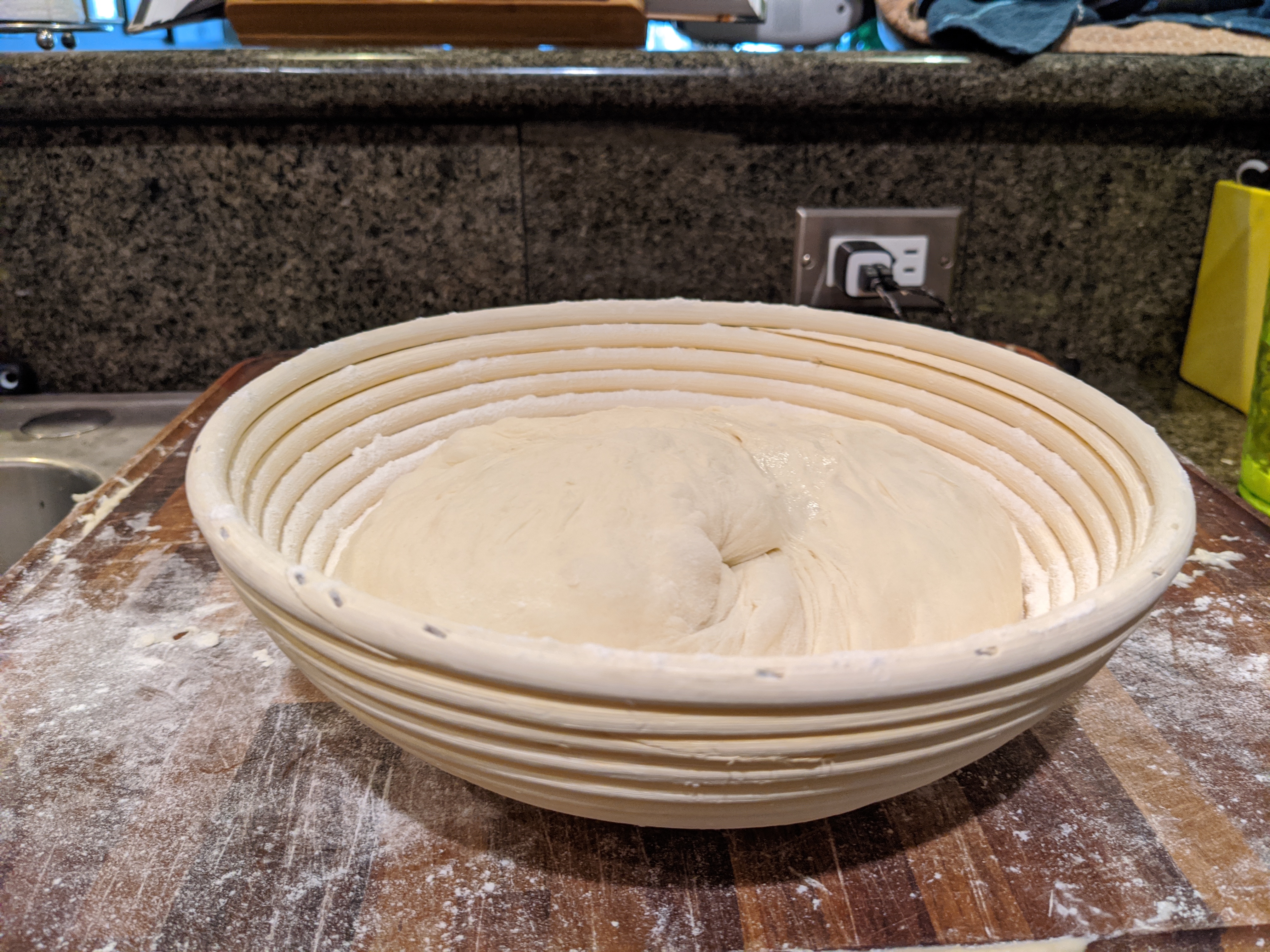
I typically let my bread stay in the fridge for 10-11 hours before preheating the oven. The oven has to get up to 500° F, which takes a while, so by the time the loaves are baking it’s been a full 12 hours. This amount of time really enhances the sourdough flavor and provides a more complex tasting loaf that lasts longer without going stale.
After preheating the oven with a dutch oven inside, I pull the dutch oven out, drop the loaf in, and score it so that the bread can rise and stretch without fighting the outer skin that has formed on the bread while it proofed in the fridge. The dutch oven is key as I don’t have a commercial oven that traps in steam and heat like what they have at Sea Wolf. The steam is necessary as it promotes a healthy rise and cooks the crust of the bread so that at the end, you’re left with something like this:
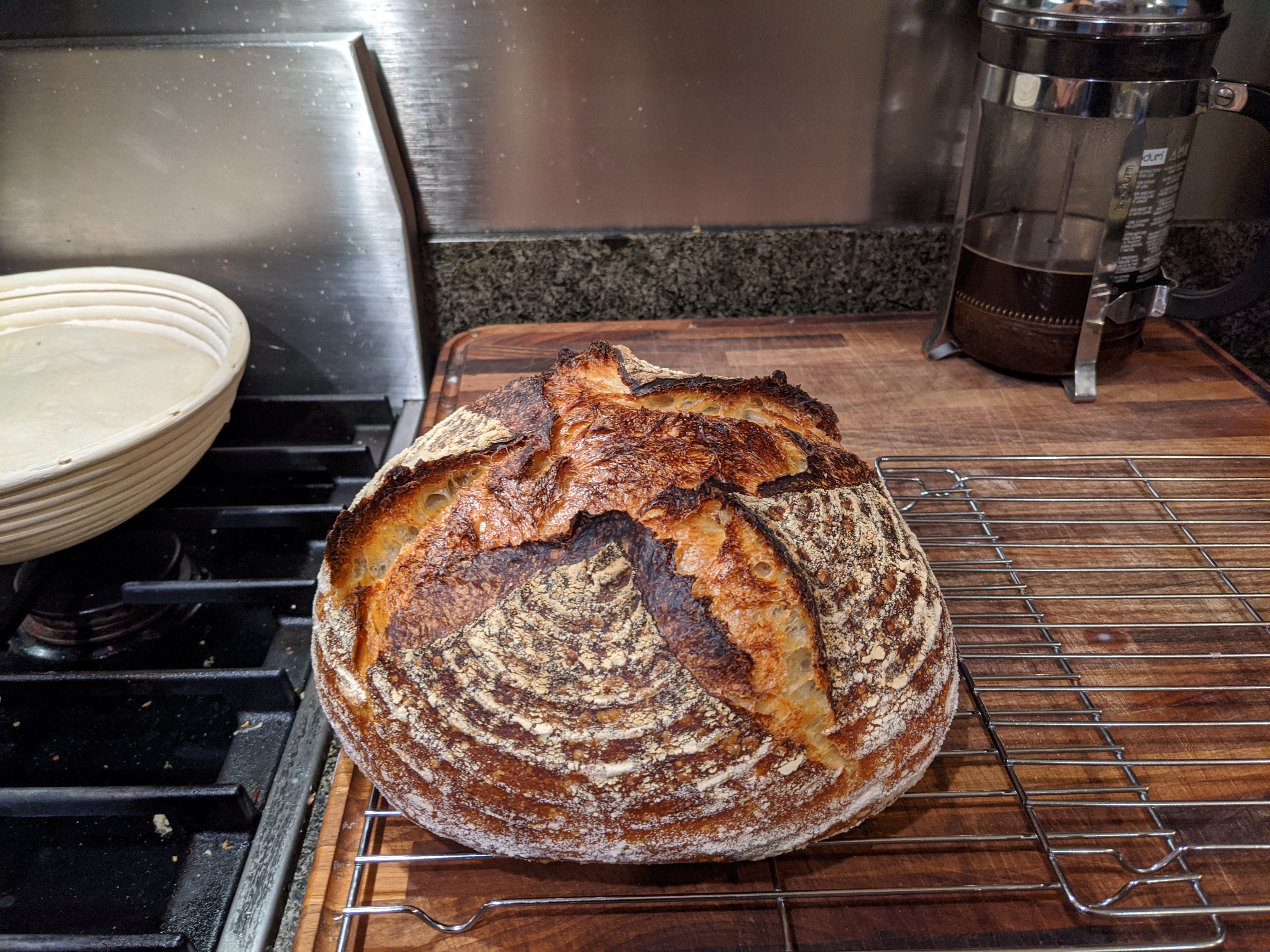
Not bad looking! There is a nice “ear” forming where I’ve scored and a good rise overall, but the real test is cutting into the loaf to see how the air pockets have distributed and what the crumb looks like:
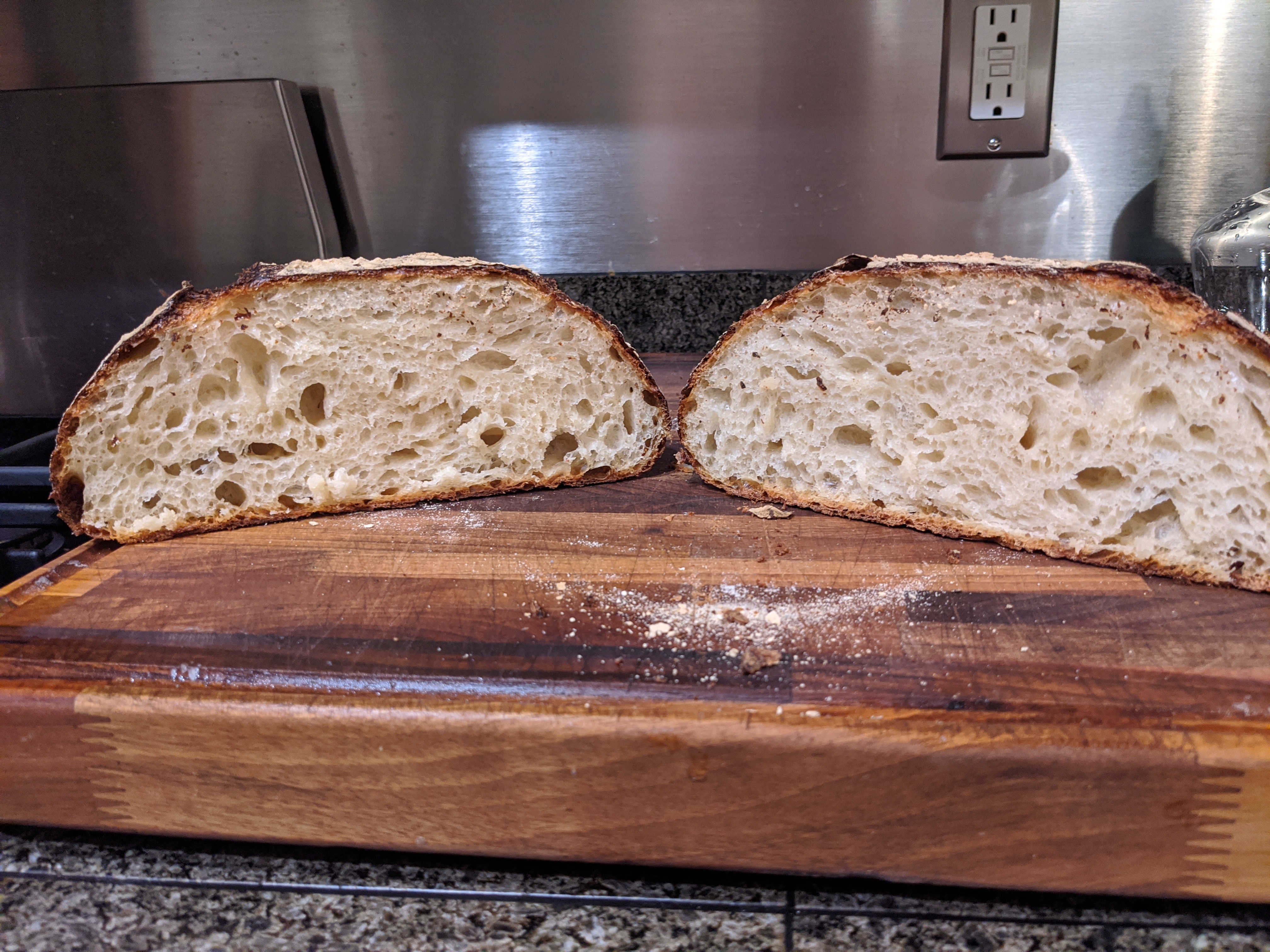
And, when all is said and done, I finish the day off by making some fresh strawberry jam so that I have something to spread over everything:
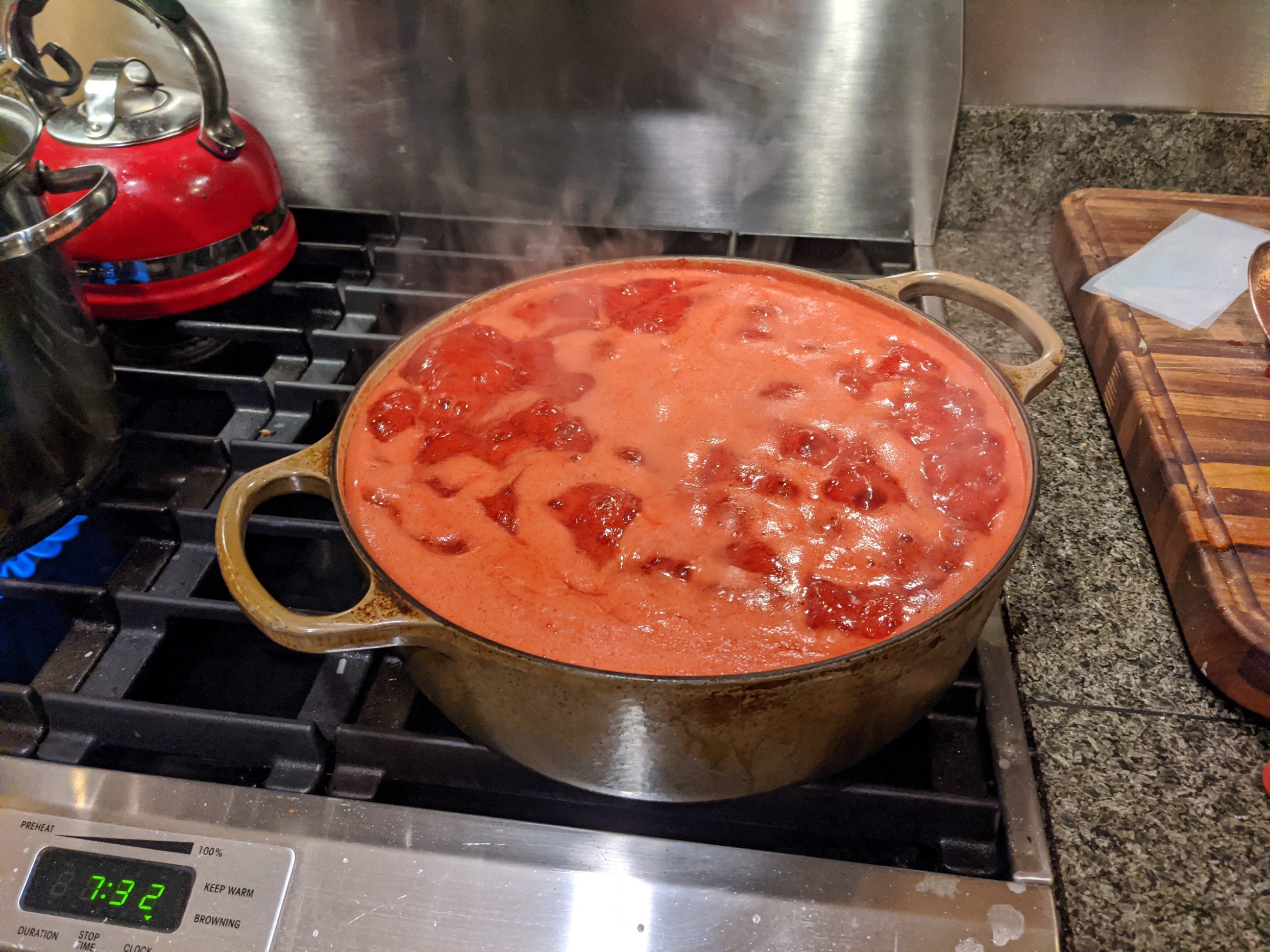
I should give a big thank you to Sea Wolf for the starter and the initial push to bake our own sourdough, Chad Robertson of the Tartine Bakery in San Francisco (his book provided most of the technique), Harvold Berry Farms for the strawberries, and my wife for putting up with me talking about bread for hours.